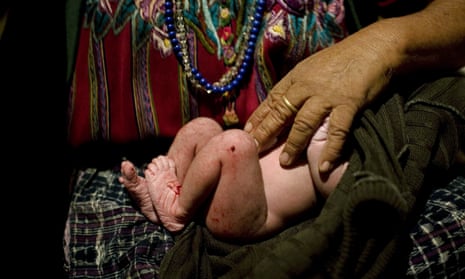The risk of dying as a newborn in the US is only slightly lower than the risk for babies in Sri Lanka and Ukraine, according to Unicef.
A report by the UN children’s agency found that five newborn babies die around the world every minute – a total of about 2.6 million a year. The figure was described as “alarmingly high”, not least because 80% of the deaths were from preventable causes.
A million babies draw their last breath the same day they took their first. A further 2.6 million are stillborn worldwide, said the report, entitled Every Child Alive.
The risk of dying as a newborn, which is closely linked to a country’s income level, varies enormously by place. Babies born in Japan, Singapore and Iceland stand the best chance of survival, while those in Pakistan, Central African Republic and Afghanistan face the worst odds, said the report, which looks at the 10 most dangerous places to be born.
A baby born in Pakistan is almost 50 times more likely to die within the first month of life than a baby born in Japan, the study found.
But a country’s income explains only part of the story. In Kuwait and the US, both high-income countries, the newborn mortality rate is respectively 4.4 and 3.7 deaths for every 1,000 live births, only slightly better than Sri Lanka and Ukraine, where the respective rates are 5.3 and 5.4.
Progress to tackle preventable mortality among newborns remained sluggish, the report said.
“While we have more than halved the number of deaths among children under the age of five in the last quarter century, we have not made similar progress in ending deaths among children less than one month old,” said Henrietta H Fore, Unicef’s executive director. “Given that the majority of these deaths are preventable, clearly, we are failing the world’s poorest babies.”
In stark contrast to the mortality rate of children aged between one month and five years old, which has fallen by 62% in the past two decades, the mortality rate among newborns fell by only 49%.
In high-income countries, the average newborn mortality rate is three deaths for every 1,000 live births. The death rate in low-income countries is 27, nine times higher, while in Pakistan, 46 babies in every 1,000 die before the end of their first month. Globally, babies born into the poorest families are 40% more likely to die in the first month than those born into the richest.
“Every year, 2.6 million newborns around the world do not survive their first month of life. One million of them die the day they are born,” said Fore. “We know we can save the vast majority of these babies with affordable, quality healthcare solutions for every mother and every newborn. Just a few small steps from all of us can help ensure the first small steps of each of these young lives.”
The report noted that eight of the 10 most dangerous places to be born are in sub-Saharan Africa, where pregnant women are much less likely to receive assistance during delivery due to poverty, conflict and weak institutions.But Rwanda, a low-income country, has halved its newborn mortality rate over the past two decades, from 41 deaths for every 1,000 live births in 1990 to 17 in 2016.
Babies born to mothers who have had no education are at almost double the risk of death faced by those whose mothers completed secondary education, the report said.
More than 80% of newborn deaths are due to being born prematurely, complications during birth, or infections such as pneumonia and sepsis. Such deaths can be prevented with access to trained midwives, clean water, disinfectants, breastfeeding within the first hour, skin-to-skin contact and good nutrition.
However, the report points out that while there are 218 doctors, nurses and midwives in Norway for every 10,000 people, that ratio falls to one for every 10,000 in Somalia.
Unicef will this month launch a global campaign, Every Child Alive, to call for better treatment of newborns, pregnant women and girls by governments, donors and healthcare providers.

Comments (…)
Sign in or create your Guardian account to join the discussion